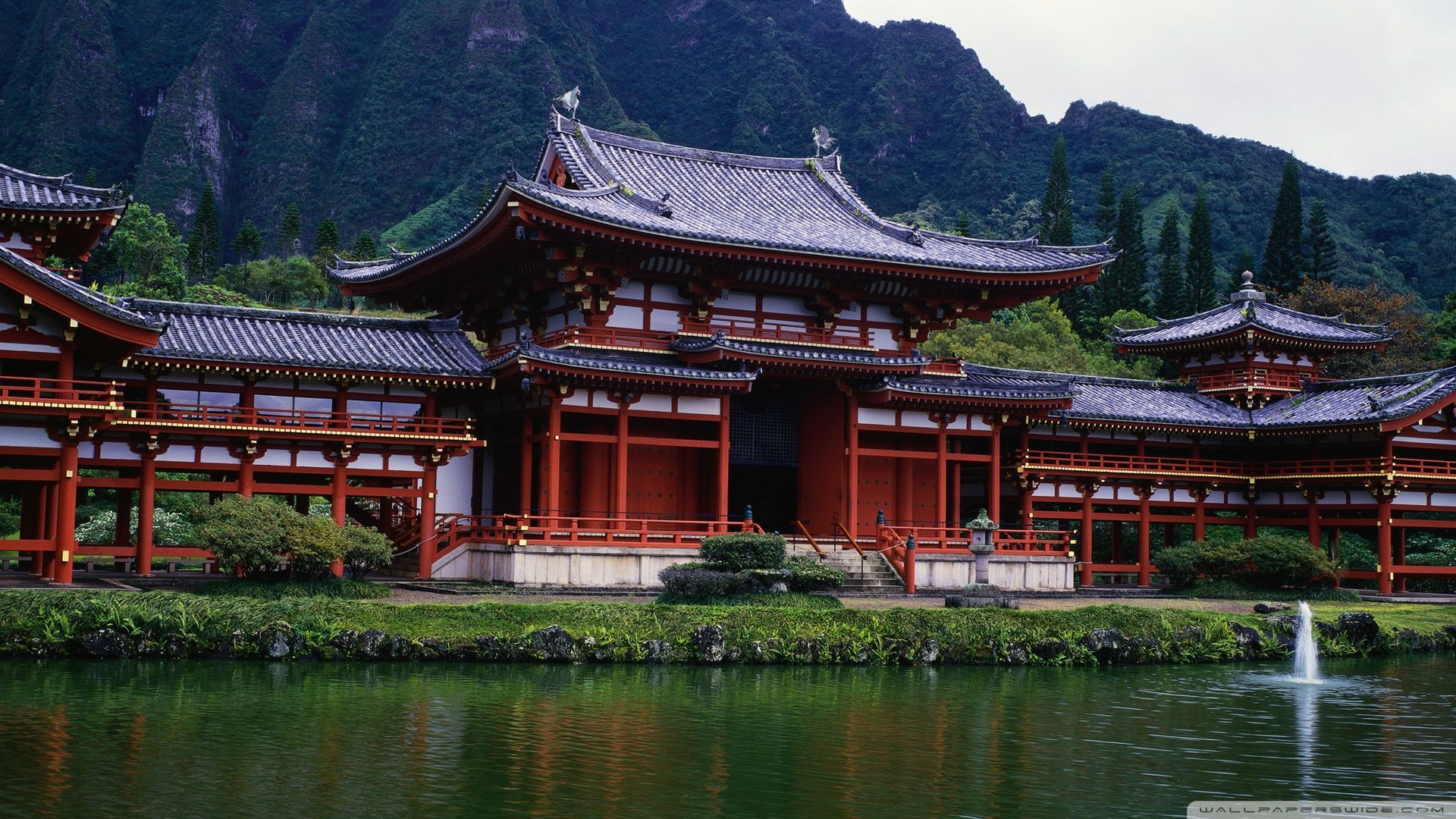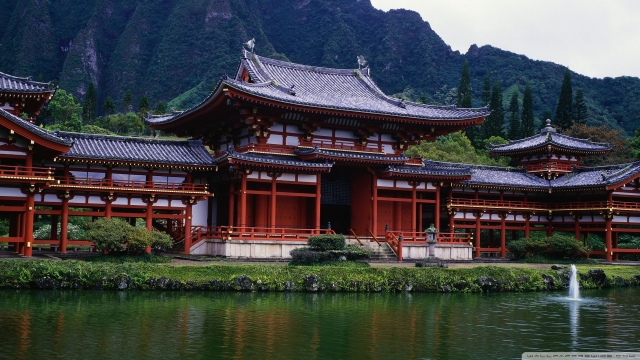
In the serene landscapes of Japan, a gentle breeze carries whispers of ancient traditions and spiritual devotion. Shinto shrines, with their distinctive architecture and tranquil settings, serve as gateways to a world where nature and divinity intertwine. These sacred spaces, rooted in Shintoism, the indigenous faith of Japan, invite visitors to pause, reflect, and connect with a rich cultural heritage that has thrived for centuries.
As one walks through the towering torii gates that mark the entrance to these shrines, a sense of reverence fills the air. Each shrine, whether nestled in the lush embrace of a forest or perched on a mountainside, tells a story of its own. These structures not only embody the aesthetic beauty of Japanese craftsmanship but also hold profound significance, acting as conduits for worshippers to honor kami, the spirits that inhabit the world. Exploring the beauty and serenity of Shinto shrines offers a glimpse into the heart of a vibrant tradition that continues to resonate in the modern age.
History and Significance of Shinto Shrines
Shinto shrines, known as jinja in Japanese, have deep historical roots that trace back to the early days of Japan’s indigenous religious practices. The origins of Shinto can be found in ancient animistic beliefs, where natural elements were revered as sacred. This reverence for the kami, or spirits, eventually formalized into the establishment of shrines, which served as places of worship and connection between humans and the divine. The earliest shrines were simple structures, often located near sacred trees, mountains, or rivers, reflecting a profound respect for the natural world.
As the centuries progressed, the architecture and significance of Shinto shrines evolved. The influence of various dynasties and the integration of Buddhist practices led to the development of more complex shrines, showcasing intricate designs and elaborate rituals. By the Heian period, Shinto shrines became vital centers for community gatherings and celebrations, symbolizing a shared cultural identity. The construction of notable shrines, such as Ise Jingu, further established the importance of Shinto in Japanese society, serving both religious and social functions.
The significance of Shinto shrines transcends their historical context; they continue to play an essential role in the spiritual life of many Japanese people today. Each shrine is not merely an architectural marvel but a living embodiment of tradition and faith. Rituals performed at these sites, including purification rites and offerings, are integral to Shinto practice, fostering a sense of community and continuity with the past. Visitors to Shinto shrines often seek blessings, guidance, and a deeper connection to their heritage, making these sacred spaces a vital part of Japan’s cultural landscape.
Architectural Elements and Design
Famous Shrine In Japan
Shinto shrines are characterized by their unique architectural styles that reflect the spiritual connections to nature and the surrounding environment. The simplicity and harmony in design promote a sense of peace and reverence. Traditional shrines often feature a torii gate, which serves as a symbolic entrance, marking the transition from the mundane world to the sacred space. The use of natural materials such as wood and thatch enhances the organic integration of the structure into its surroundings.
The layout of Shinto shrines typically follows a specific pattern, with the main shrine building, or honden, positioned at the back of the grounds, providing a sense of hierarchy and focus. The honden is often elevated, emphasizing its sacredness. In contrast, the paths leading up to the shrine are designed to create a journey, inviting visitors to reflect and engage with the serene environment. Water basins, or temizuya, are also incorporated within the shrine precincts for purification rituals, showcasing the importance of cleanliness in Shinto practices.
Decorative elements found in Shinto shrines, such as ema (votive tablets) and shide (paper streamers), contribute to the overall aesthetic and spiritual ambiance. Many shrines also feature intricate carvings and other artistic expressions that resonate with cultural significance, often depicting nature or mythical creatures. The color schemes, particularly the prominent use of vermilion, create a striking visual impact while symbolizing protection against evil spirits. Collectively, these architectural components foster an environment that underscores the sacred beauty of Shinto shrines.
Rituals and Practices at Shinto Shrines
Visitors to Shinto shrines often engage in various rituals that reflect the deep spiritual significance of these sacred spaces. One of the most common practices is the purification ritual known as "temizu," where individuals cleanse their hands and mouths at a water basin before entering the shrine. This act symbolizes the removal of impurities and prepares the mind and body for worship. The gentle sounds of flowing water and the serene atmosphere create a peaceful transition into the spiritual realm of the shrine.
Another key aspect of rituals at Shinto shrines is the offering of prayers and gifts, typically performed at the main hall or "honden." Worshippers will bow, clap their hands twice, offer a monetary donation, and then bow once more to express their gratitude and hopes to the kami, or spirits residing within the shrine. These rituals foster a connection between the individual and the divine, enhancing the experience of reverence and respect for the kami and the natural world that envelops the shrine.
Festivals, or "matsuri," play a significant role in Shinto practices, bringing together communities in celebration and gratitude. These vibrant events often include traditional dances, music, and rituals that honor the kami and give thanks for the blessings of the past year. Matsuri vary by region and shrine, highlighting local customs and the unique relationship each community has with their sacred landscapes, serving as a reminder of the enduring ties between people, nature, and spirituality rooted in Shinto beliefs.
Cultural Impact and Preservation Efforts
Shinto shrines serve as vital cultural landmarks that represent centuries of Japanese tradition and spirituality. They are not merely places of worship, but also sites that embody the rich history and artistic expression of Japan. The architectural styles, which often incorporate natural elements, resonate deeply with the Shinto belief in the sacredness of nature. Festivals and rituals held at these shrines help sustain community bonds and preserve local customs, ensuring that the cultural heritage associated with these sacred spaces remains alive and vibrant.
Efforts to preserve Shinto shrines are multifaceted, involving both governmental support and community initiatives. Organizations dedicated to the preservation of cultural heritage work closely with shrine caretakers to maintain the integrity of the structures and their surrounding environments. Restoration projects often utilize traditional techniques and materials, reflecting a commitment to authenticity. Educational programs aimed at raising awareness about the significance of Shinto shrines also play a crucial role, inspiring younger generations to appreciate and engage with their cultural roots.
The global interest in Shinto shrines has sparked a deeper appreciation for Japanese culture internationally. These sacred sites attract visitors from around the world, fostering cross-cultural exchange and understanding. As tourism increases, it has become essential to balance modern accessibility with the preservation of these ancient treasures. Through a blend of technology, cultural education, and community involvement, there is ongoing hope for the continued reverence and conservation of Shinto shrines for future generations, ensuring that the whispers of the ancients will resonate for years to come.



